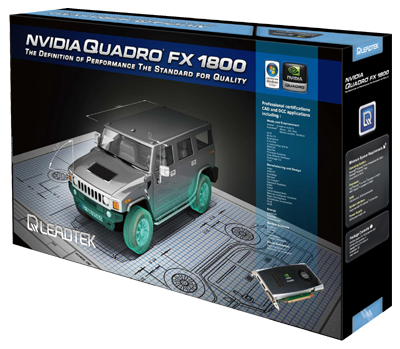
If you're a a workstation user, you might be familiar with the professional video cards from NVIDIA called the Quadro. Unlike the GeForce graphic cards, which are designed for gaming and multimedia, the Quadro cards are designed with 3D and digital animation in mind - though they can also handle 3D games as well - but not so good since they're not designed for it!
But why? Want to know more about the differences? Read on to find out.
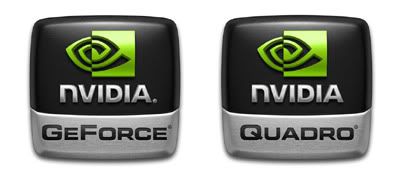
By the way, both GeForce and Quadro can also be used for programming via NVIDIA's CUDA technology, which makes use of GPGPU, a concept where the graphic card's GPU is used as a processor - just like the processor on the mainboard. The difference in that the program must be specially designed to take advantage of this. That's where technology like CUDA comes in so programs written for CUDA can do this.
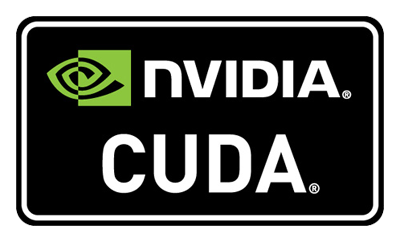
CUDA allows you to use GeForce and Quadro card for more than what they're designed for - like video conversion (transcoding), image editing, and even artificial intelligence (AI)!
More on CUDA later - let's focus on the Quadro first, since most people know about GeForce already. Then we'll get on to how CUDA can be used on both cards.
The Quadro is much more expensive than the GeForce because they perform better for 3D work, especially in response times working with a 3D object, thanks to their data transfer bandwidth, optimised drivers, as well as the firmware on the Quadro, which controls things like sacrificing speed for quality. In games, speed is more important, hence why in GeForce cards this will be reversed. In Quadro cards, quality is much more important.
Worth mentioning is that the Quadro runs at 5GBps for its data transfer, taking advantage of the 5GBps PCI Express 2.0 slot (where a graphic card sits on a mainboard). The highest-end single-GPU GeForce, the 285, runs at 4.6GBps. For reference, the older PCI Express 1.0 slot interface supports up to 2.5GBps only.

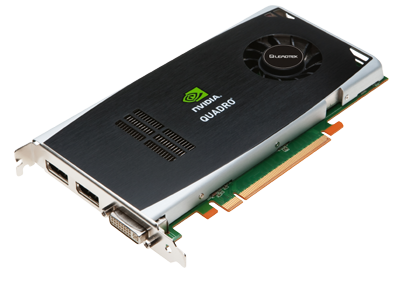
To take a better look at Quadro, we'll be testing one from Leadtek, the FX 1800, which replaces the previous FX 1700, both coming from the middle-range line. Stay tuned for it!
But why? Want to know more about the differences? Read on to find out.

By the way, both GeForce and Quadro can also be used for programming via NVIDIA's CUDA technology, which makes use of GPGPU, a concept where the graphic card's GPU is used as a processor - just like the processor on the mainboard. The difference in that the program must be specially designed to take advantage of this. That's where technology like CUDA comes in so programs written for CUDA can do this.

CUDA allows you to use GeForce and Quadro card for more than what they're designed for - like video conversion (transcoding), image editing, and even artificial intelligence (AI)!
More on CUDA later - let's focus on the Quadro first, since most people know about GeForce already. Then we'll get on to how CUDA can be used on both cards.
The Quadro is much more expensive than the GeForce because they perform better for 3D work, especially in response times working with a 3D object, thanks to their data transfer bandwidth, optimised drivers, as well as the firmware on the Quadro, which controls things like sacrificing speed for quality. In games, speed is more important, hence why in GeForce cards this will be reversed. In Quadro cards, quality is much more important.
Worth mentioning is that the Quadro runs at 5GBps for its data transfer, taking advantage of the 5GBps PCI Express 2.0 slot (where a graphic card sits on a mainboard). The highest-end single-GPU GeForce, the 285, runs at 4.6GBps. For reference, the older PCI Express 1.0 slot interface supports up to 2.5GBps only.

Autodesk's 3D software - AutoCAD (left), 3D Studio Max (centre), Maya (right)
ALso, some Quadro cards are specially designed for certain 3D software like Autodesk's classic AutoCAD, or their acquired 3ds (3D Studio Max) and Maya software. While GeForce just needs to be fast for modern 3D games, Quadro needs to be accurate, and this is where it excels in, and that explains the higher cost of the hardware.
To take a better look at Quadro, we'll be testing one from Leadtek, the FX 1800, which replaces the previous FX 1700, both coming from the middle-range line. Stay tuned for it!



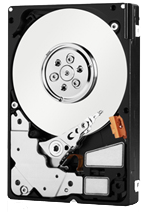
















0 opinions:
Post a Comment